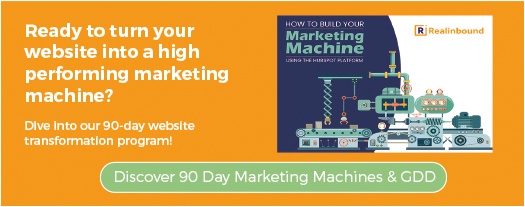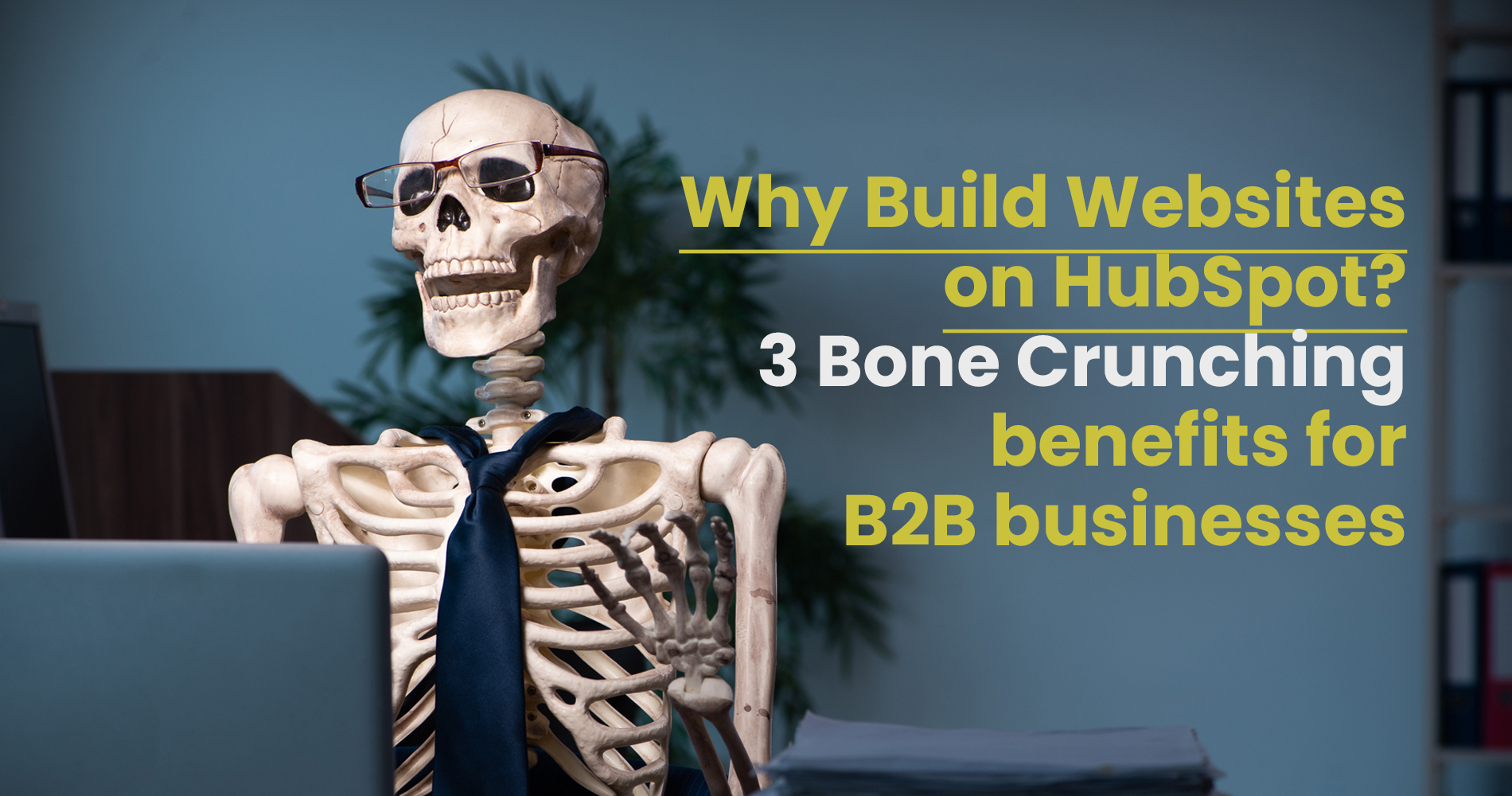In today's fast-paced digital era, B2B companies face a unique set of challenges and opportunities. The digital landscape has evolved rapidly, and with it, the expectations of B2B buyers. These buyers are no longer content with static, one-dimensional websites that serve as mere digital brochures.
They seek dynamic, engaging online experiences that offer value, insight, and solutions to their specific needs. This shift demands that B2B companies rethink their online presence. Transforming a website from a simple information dispenser to a robust, interactive marketing tool is no longer just advantageous; it's essential for survival and growth in the digital marketplace.
This article delves into how B2B companies can revolutionise their websites, harnessing the power of inbound marketing to attract, engage, and delight customers, thereby driving growth and establishing a formidable digital footprint.
Understanding the B2B Buyer Journey
The B2B buyer journey is a complex process, significantly more nuanced than the B2C journey due to longer sales cycles, multiple decision-makers, and higher stakes in purchase decisions. It typically unfolds in several stages:
Awareness Stage: The buyer realises they have a problem or a need. At this stage, a B2B website should offer educational content that helps potential customers understand their challenges better. Blogs, industry reports, and informational pages are key.
Consideration Stage: Now aware of their problem, the buyer begins exploring solutions. Here, a website needs to showcase its solutions effectively through case studies, product descriptions, and demonstration videos. It's about helping the buyer evaluate how your offering can address their specific needs.
Decision Stage: The final stage where the buyer is ready to make a purchase decision. The website should provide detailed product information, pricing, testimonials, and persuasive calls-to-action (CTAs). Ease of navigation to contact forms or product purchase pages is crucial.
Throughout these stages, personalisation plays a significant role. B2B websites should aim to cater content and user experience to the specific industry, company size, or even individual roles within a company. This tailored approach helps in guiding the potential customer through their journey, providing relevant information at each stage, and gently nudging them towards making a decision.
Moreover, integrating tools like CRM systems and marketing automation can help in tracking user behaviour, enabling further personalisation and targeted follow-up strategies. It's about creating a journey that's not just informative, but also engaging and responsive to the evolving needs of the B2B buyer.
A MUST READ: The Balance of power has shifted - Understanding the Buyers Journey
The Role of Core Positioning and Messaging
In B2B marketing, clear and targeted messaging is pivotal. It transcends mere communication; it's about creating a resonant narrative that aligns with the core values and needs of the target audience. Effective messaging starts with a strong core positioning statement. This statement should succinctly encapsulate what the company offers, to whom, and why it's unique. It's not just what you do, but how you do it differently or better than your competition.
To establish this core positioning, deep market research is essential. Understand not just your product, but also the industry landscape, competitors, and most critically, your audience. Who are they? What challenges do they face? How do they make decisions? Answering these questions helps in crafting a message that speaks directly to the needs and pain points of your target audience.
Moreover, consistency in messaging across all platforms reinforces your brand's identity and values. This uniformity ensures that whether a potential client reads your blog, browses your website, or interacts with your social media, they receive the same core message. This consistency builds trust and recognition, key elements in the B2B decision-making process.
Finally, your messaging should evolve with your audience and market. Regularly revisiting and refining your message ensures it remains relevant and impactful. In the fast-paced B2B environment, staying attuned to changing trends and customer needs is not just beneficial, it’s necessary for sustained success.
Designing for Engagement and Conversion
Effective web design in the B2B realm goes beyond aesthetics; it's a strategic tool for engagement and conversion. Key elements include:
User Experience (UX): A website should offer intuitive navigation and a clear structure, making it easy for visitors to find what they need quickly. This involves logical menu layouts, search functionality, and a mobile-responsive design.
Visual Appeal: Professional and clean designs with appropriate use of colours and imagery can significantly impact first impressions. It’s about striking a balance between visual flair and functional clarity.
Loading Speed: Fast-loading pages are essential. Slow websites not only frustrate visitors but also negatively impact search engine rankings.
Content Hierarchy: Effective use of headings, bullet points, and short paragraphs helps in guiding the visitor through the content smoothly, making the key points stand out.
Call-to-Actions (CTAs): CTAs should be strategically placed to guide visitors towards conversion, be it signing up for a newsletter, downloading a whitepaper, or contacting sales. They should be clear, compelling, and relevant to the content around them.
Trust Signals: Including testimonials, certifications, and case studies help in building credibility and trust with potential customers.
To increase conversion rates, A/B testing is crucial. This involves testing different versions of a webpage to see which performs better in terms of user engagement and conversion. Continuous analysis and optimisation based on user behaviour data ensure that the website not only attracts visitors but also effectively converts them into leads or customers. It’s about creating an online environment that’s not just informative and visually appealing, but also primed for achieving business goals.
CASE STUDY: Speedshift | Monumental Leap in Lead Generation and Cost Efficiency
Content Strategy: Educating and Engaging B2B Buyers
Content plays a crucial role in the B2B landscape. It's not just about attracting leads; it's about educating and engaging them throughout the buying journey.
Educational Content: This includes blogs, whitepapers, and e-books that provide in-depth insights into industry trends, challenges, and solutions. They establish thought leadership and trust, crucial for nurturing leads in a B2B context.
Case Studies and Testimonials: These offer real-world examples of how your product or service has solved similar challenges faced by potential clients, providing credibility and relatability.
Video Content: Videos can range from product demonstrations to expert interviews or webinars. They provide a dynamic way to engage and inform potential clients.
Interactive Content: Tools like calculators, quizzes, or assessments can actively involve the buyer, offering personalised insights or recommendations.
Email Newsletters: Regular newsletters keep your audience informed about the latest content, news, and updates, keeping your brand top of mind.
Each type of content should be strategically created and distributed to resonate with the target audience at different stages of their buyer journey, effectively guiding them from awareness to decision-making. The goal is to provide value at every step, fostering a relationship that goes beyond the transactional and positions your brand as a trusted advisor in your industry.
Leveraging Lead Magnets and Sales Assets
Creating compelling lead magnets is about offering valuable resources in exchange for contact information. The key is relevance and value. For instance, a detailed guide solving a specific industry problem can be an irresistible download for your target audience. The format should be easily consumable, whether it’s an eBook, a webinar, or a software tool.
Integrating these assets into your website effectively is crucial. This can be done through strategically placed CTAs, dedicated landing pages, and seamless forms. Remember, the easier it is for a visitor to access the resource, the more likely they are to engage. Also, ensure that your lead magnets are promoted across your website, not just buried in a single page. Use blog posts, sidebars, and even the homepage to highlight these valuable resources.
The goal is to create a smooth journey from the lead magnet to other sales assets on your website, like product demos or consultation requests, effectively nurturing leads into customers.
A CHRISTMAS WEDDING: A Marriage Made in Heaven or Hell? Lead Generation Vs Lead Nurturing
Analytics and Continuous Improvement
Analytics play a crucial role in understanding visitor behaviour and optimising websites. By analysing data on user interactions, such as page views, bounce rates, and conversion paths, B2B companies can gain insights into what content and features resonate with their audience. This data should be used to make informed decisions about website design, content, and user experience.
Continuous improvement is key. Regularly testing different elements of the website, such as headlines, CTAs, or page layouts, through A/B testing can lead to incremental improvements that significantly boost overall performance. Moreover, staying attuned to the latest SEO practices ensures that the website remains visible and relevant in search engine results. This ongoing process of analysis, testing, and refinement helps in creating an ever-evolving platform that effectively meets the needs of the target audience and the business objectives.
Key takeaways
In conclusion, embracing the digital revolution is vital for B2B companies. By understanding and responding to the nuanced buyer journey, crafting resonant messaging, designing for engagement, and offering valuable content, B2B websites can transform into powerful marketing tools. This comprehensive approach not only addresses the needs of modern B2B buyers but also positions companies for growth and success in the competitive digital marketplace. Continual analysis and optimisation ensure that your website remains a relevant, dynamic force in your industry.




